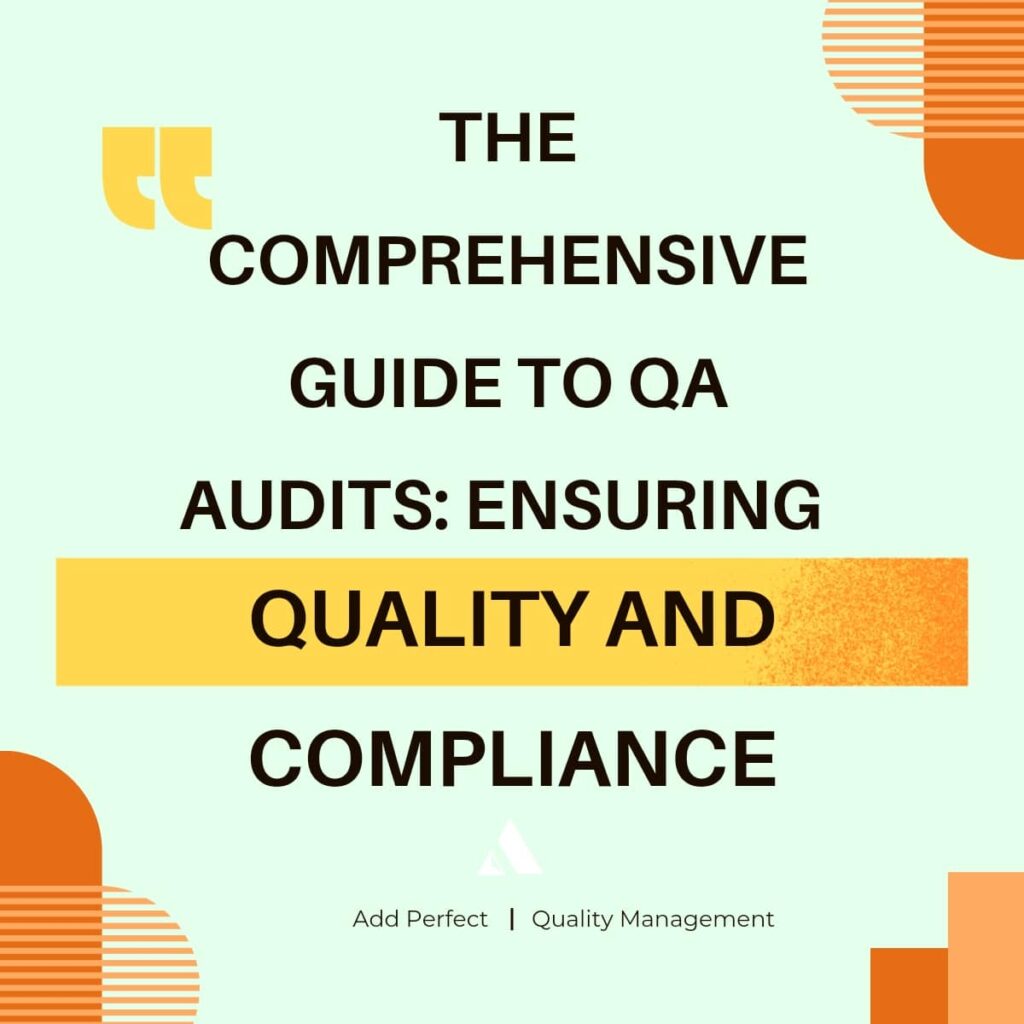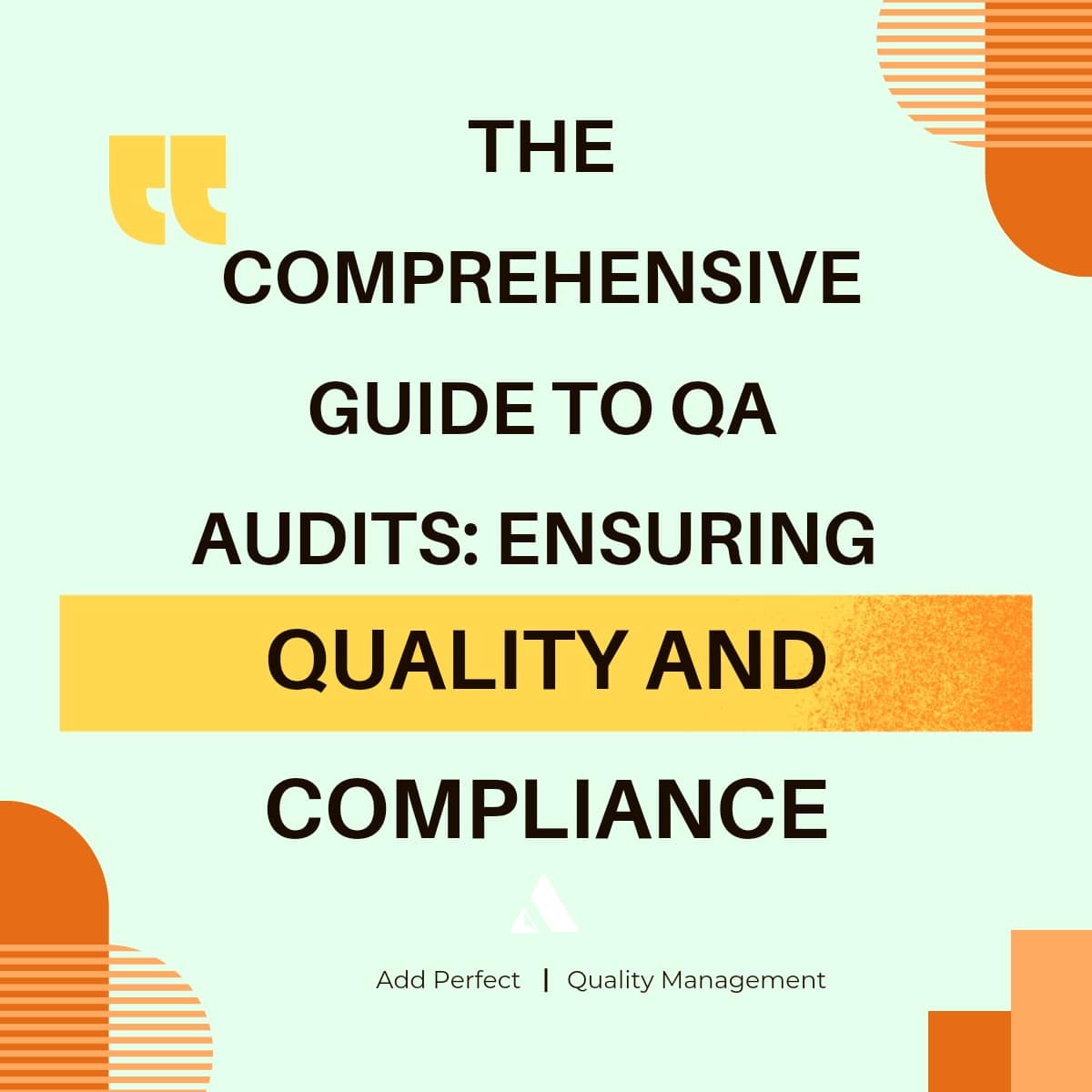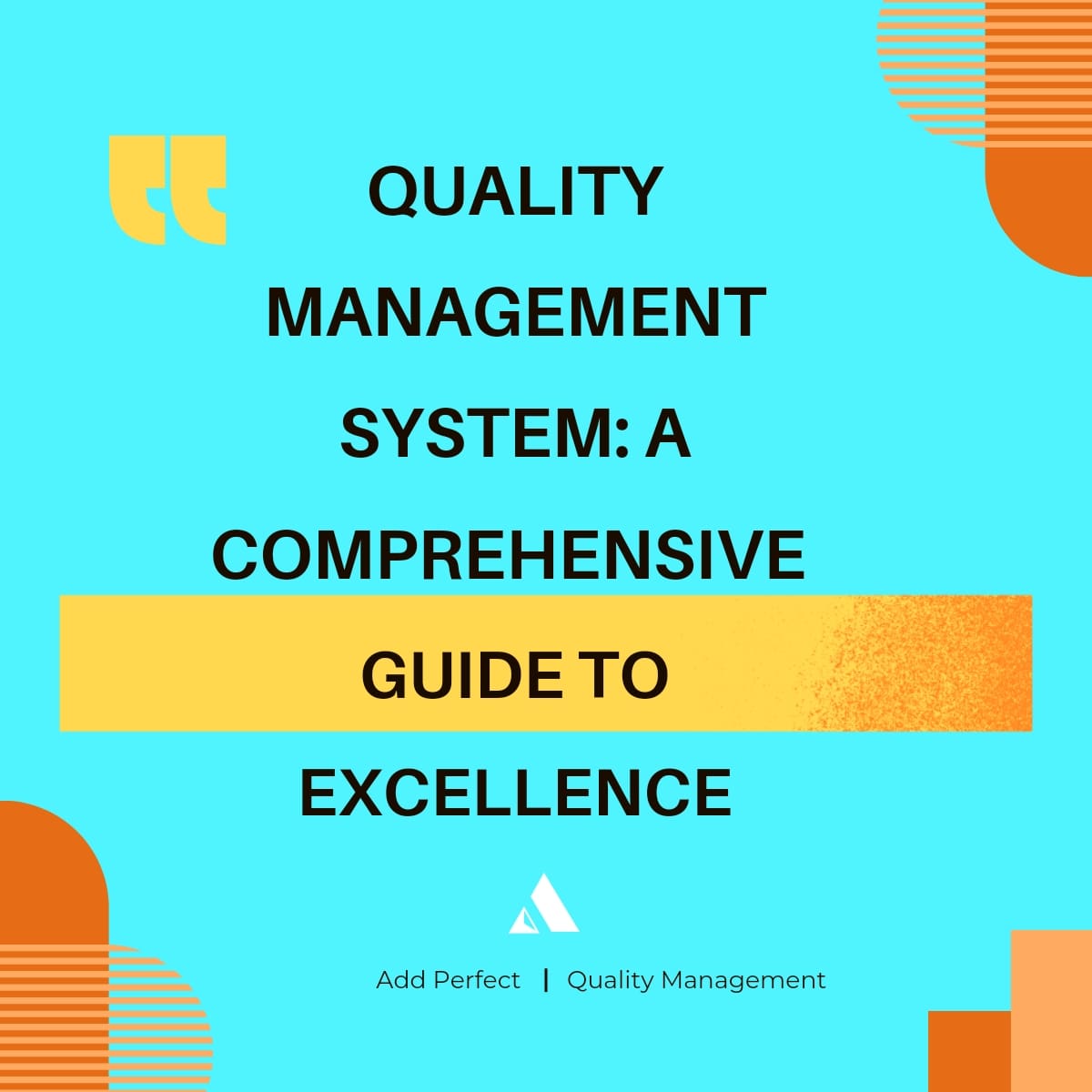Discover the significance of QA audits in maintaining quality and compliance. Learn the process, benefits, and best practices for effective QA audits to ensure product and service excellence.

Introduction
In today’s competitive market, maintaining high standards of quality and compliance is paramount for businesses. Quality Assurance (QA) audits play a crucial role in this process, ensuring that products and services meet the required standards and regulations. This detailed guide explores the importance of QA audits, their process, benefits, and best practices, providing a comprehensive resource for businesses aiming to excel in quality management.
What are QA Audits?
QA audits are systematic evaluations of various processes, systems, and products to ensure they adhere to predefined quality standards and regulatory requirements. These audits help identify areas for improvement, ensuring that organizations maintain consistency, efficiency, and compliance.
Importance of QA Audits
The significance of QA audits in maintaining quality and compliance can be outlined as follows:
| Aspect | Description |
|---|---|
| Quality Assurance | Ensures that products and services meet specified quality standards. |
| Regulatory Compliance | Verifies adherence to industry regulations and legal requirements. |
| Risk Management | Identifies potential risks and areas for improvement, minimizing the likelihood of errors. |
| Continuous Improvement | Facilitates ongoing improvement by identifying inefficiencies and suggesting corrective actions. |
Benefits of QA Audits
Implementing effective QA audits offers numerous benefits, including:
| Benefit | Description |
|---|---|
| Enhanced Product Quality | Ensures consistent production of high-quality products and services. |
| Operational Efficiency | Streamlines processes, reducing waste and increasing efficiency. |
| Customer Satisfaction | Builds customer trust and loyalty through reliable quality and compliance. |
| Compliance Assurance | Confirms adherence to regulatory standards, avoiding legal issues and penalties. |
The QA Audit Process
The QA audit process involves several key steps to ensure thorough evaluation and improvement:
1. Planning the Audit
Planning is the first step in the QA audit process, where objectives, scope, and criteria are defined.
| Activity | Description |
|---|---|
| Defining Objectives | Setting clear goals and objectives for the audit. |
| Establishing Scope | Determining the areas, processes, and systems to be audited. |
| Criteria and Standards | Identifying the standards and criteria against which the audit will be conducted. |
2. Conducting the Audit
Conducting the audit involves systematic examination and evaluation of processes and systems.
| Activity | Description |
|---|---|
| Data Collection | Gathering relevant data and information through observations, interviews, and document reviews. |
| Evaluation and Analysis | Assessing the collected data against predefined criteria and standards. |
| Identifying Non-Conformities | Detecting areas that do not meet the required standards or criteria. |
3. Reporting and Documentation
After the audit, findings are documented, and a comprehensive report is prepared.
| Activity | Description |
|---|---|
| Audit Report | Documenting findings, including non-conformities, observations, and recommendations. |
| Corrective Action Plan | Developing a plan to address identified issues and improve processes. |
4. Follow-Up and Continuous Improvement
Post-audit activities ensure that corrective actions are implemented and monitored for effectiveness.
| Activity | Description |
|---|---|
| Implementing Actions | Taking corrective actions to address identified non-conformities. |
| Monitoring and Review | Continuously monitoring processes to ensure sustained improvements. |
| Re-Audit | Conducting follow-up audits to verify the effectiveness of corrective actions. |
Types of QA Audits
QA audits can be categorized into different types based on their focus and objectives:
| Type of Audit | Description |
|---|---|
| Internal Audits | Conducted by internal teams to evaluate internal processes and systems. |
| External Audits | Performed by external auditors to provide an unbiased evaluation of processes. |
| Compliance Audits | Focus on ensuring adherence to regulatory and industry standards. |
| Process Audits | Evaluate specific processes to identify inefficiencies and areas for improvement. |
| Product Audits | Assess the quality and compliance of finished products. |
Best Practices for QA Audits
To ensure the effectiveness of QA audits, organizations should follow these best practices:
| Best Practice | Description |
|---|---|
| Clear Communication | Maintaining transparent communication throughout the audit process. |
| Skilled Auditors | Employing experienced and trained auditors for accurate evaluations. |
| Comprehensive Training | Providing regular training to staff on quality standards and audit processes. |
| Regular Audits | Conducting audits at regular intervals to ensure continuous improvement. |
| Stakeholder Involvement | Involving relevant stakeholders in the audit process for comprehensive insights. |
Challenges in QA Audits
Implementing QA audits can present several challenges:
| Challenge | Description |
|---|---|
| Resource Constraints | Limited availability of skilled auditors and resources. |
| Resistance to Change | Employee resistance to new audit processes and standards. |
| Complex Regulations | Navigating complex and evolving regulatory requirements. |
| Data Accuracy | Ensuring the accuracy and reliability of collected data. |
Overcoming Challenges
Effective strategies to overcome these challenges include:
| Strategy | Description |
|---|---|
| Leadership Support | Gaining strong leadership commitment to quality and audits. |
| Clear Policies | Establishing clear policies and procedures for audits. |
| Continuous Training | Providing ongoing training and development for audit teams. |
| Technology Integration | Utilizing advanced technologies for data collection and analysis. |
Case Studies: Successful QA Audits
Case Study A: Pharmaceutical Industry
Challenge: Ensuring compliance with stringent regulatory standards.
Strategy: Implemented comprehensive internal and external QA audits.
Outcome: Achieved full compliance with regulatory requirements and improved product quality.
Case Study B: Automotive Manufacturing
Challenge: High defect rates in production.
Strategy: Adopted process audits and Lean Six Sigma methodologies.
Outcome: Reduced defects by 40% and enhanced production efficiency.
Conclusion
QA audits are essential for maintaining high-quality standards and regulatory compliance in any organization. By understanding the process, benefits, and best practices of QA audits, businesses can ensure consistent quality, improve operational efficiency, and enhance customer satisfaction. Implementing effective QA audits is a strategic move towards achieving excellence and staying competitive in the market.




My admiration for your creations is the same as your own opinion. The visual presentation is tasteful, while the written content is sophisticated. You’re skeptical, despite the fact that you are aware of it. I’m confident that you’ll be able to resolve this problem quickly and effectively.